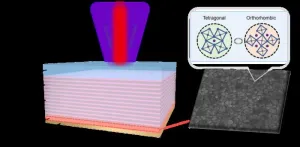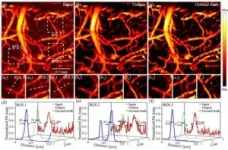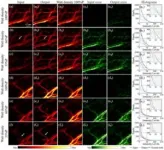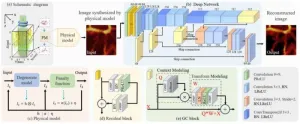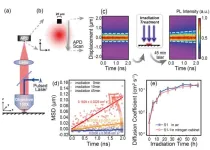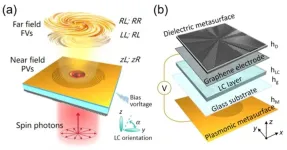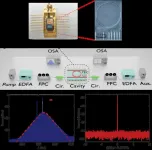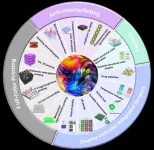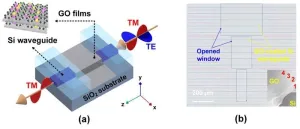A new publication from Opto-Electronic Advances; DOI 10.29026/oea.2025.240220, discusses how phase-change perovskite enables traditional VCSEL to achieve low-threshold, tunable single-mode lasers.
As an important light source, lasers are widely used in many fields such as communications, medical treatment, display technology and scientific research. However, with the continuous advancement of technology, people have put forward higher requirements on the performance of lasers, especially in terms of integration and tunability. Traditional lasers typically rely on fixed gain media and external microcavity structures (such as Fabry-Perot cavities, photonic crystals, whispering galleries, etc.). Although these structures can achieve efficient laser emission, their operating wavelengths are often fixed, which makes it difficult to meet the needs of modern science and technology for tunable lasers. Therefore, the development of a laser that can achieve low-threshold laser emission and is tunable over a wide wavelength range has become one of the current research hotspots.
Halide perovskite semiconductor materials have the characteristics of high dielectric constant, high photoluminescence quantum yield, tunable band gap and narrow radiation spectrum, and are considered to be ideal gain media for realizing low-cost, high-performance lasers. Since the first optical pumping laser of halide perovskite was realized in 2014, researchers have successfully constructed perovskite lasers such as distributed feedback (DFB) lasers and vertical cavity surface emitting lasers (VCSELs) using various external microcavity structures. These lasers have made significant progress in controlling laser wavelength and beam shape, but they are still limited to fixed wavelength operation mode and cannot meet the needs of tunable lasers. Halide perovskites not only have excellent optical properties, but also can achieve crystal phase transition through changes in temperature, pressure or chemical composition, thereby causing significant changes in refractive index, making them ideal candidate materials for realizing tunable lasers. Despite this, the potential of halide perovskites as phase-change tunable laser gain media has not yet been fully developed.
The research group of Prof. Cao from Dalian University of Technology has achieved low-threshold, wide-wavelength tunable single-mode laser emission in the near-infrared (NIR) by combining phase-change perovskite with the traditional vertical-cavity surface-emitting laser (VCSEL) structure. The high-quality (Q) factor vertical cavity consists of two highly reflectors (Au mirror and distributed Bragg reflector (DBR)) parallel to each other, with the methylammonium lead iodide CH3NH3PbI3 (MAPbI3) gain medium sandwiched between them. The change in luminescence and refractive index upon structural state change leads to a broad spectral tunability in lasing frequency ranging from 790.6 nm to 799.7 nm, and with a significant tuning rate of ~0.30 nm K-1. This rate is one order higher in magnitude compared to the traditional semiconductor lasers. The single-mode lasing emission with excellent spatial coherence can be readily obtained through this simple vertical-cavity. The constructed vertical cavity surface emitting laser (VCSEL) exhibits extraordinary performance, with a low lasing threshold of ~23.5 μJ cm-2, and a broad tuning range of the emission frequency from 790.6 nm to 799.7 nm. In addition, the device maintains its performance over 2.4 × 107 cycles of optical pulse excitation with a duration of ~50 mins.
This tunable perovskite VCSEL could investigating the properties of superconducting materials, where the superconducting phenomenon typically occurs under low-temperature conditions, this laser could provide a stable, wavelength-tunable light source. Such a light source would be ideal for probing the optical response characteristics of superconducting materials across different superconducting states, such as changes in reflectivity and absorptivity. This capability would facilitate a deeper understanding of the underlying superconducting mechanisms and the material properties.
The next step in this work is to optimize the phase-change perovskite layer to achieve temperature-tunable lasers at room temperature. This work not only promotes the development of tunable perovskite VCSELs but also provides inspiration for the next generation of stable electrically injected perovskite lasers.
Keywords: tunable / perovskite / phase change / vertical cavity surface emitting laser
# # # # # #
The Key Laboratory of New Functional Materials and Devices at Dalian University of Technology has been dedicated to research in metamaterials, photonic crystals, and optoelectronic devices. The team consists of over 50 faculty members and students and has undertaken more than 30 projects, including national key R&D projects, international science and technology cooperation projects, National Natural Science Foundation projects, and aerospace company commissioned projects. Graduate students and postdoctoral researchers with backgrounds in physics, optics, optoelectronics, materials science, communications, and related fields are welcome to join. For more details, please refer to the faculty homepage: http://faculty.dlut.edu.cn/2010011065/zh_CN/index.htm
# # # # # #
Opto-Electronic Advances (OEA) is a rapidly growing high-impact, open access, peer reviewed monthly SCI journal with an impact factor of 15.3 (Journal Citation Reports for IF2023). Since its launch in March 2018, OEA has been indexed in SCI, EI, DOAJ, Scopus, CA and ICI databases over the time, and expanded its Editorial Board to 34 members from 17 countries.
# # # # # #
More information: http://www.oejournal.org/oea
Editorial Board: http://www.oejournal.org/oea/editorialboard/list
All issues available in the online archive (http://www.oejournal.org/oea/archive).
Submissions to OEA may be made using ScholarOne (https://mc03.manuscriptcentral.com/oea).
ISSN: 2096-4579
CN: 51-1781/TN
Contact Us: oea@ioe.ac.cn
Twitter: @OptoElectronAdv (https://twitter.com/OptoElectronAdv?lang=en)
WeChat: OE_Journal
# # # # # #
Wang RZ, Su Y, Fan HJ et al. Tunable vertical cavity microlasers based on MAPbI3 phase change perovskite. Opto-Electron Adv 8, 240220 (2025). doi: 10.29026/oea.2025.240220
END
